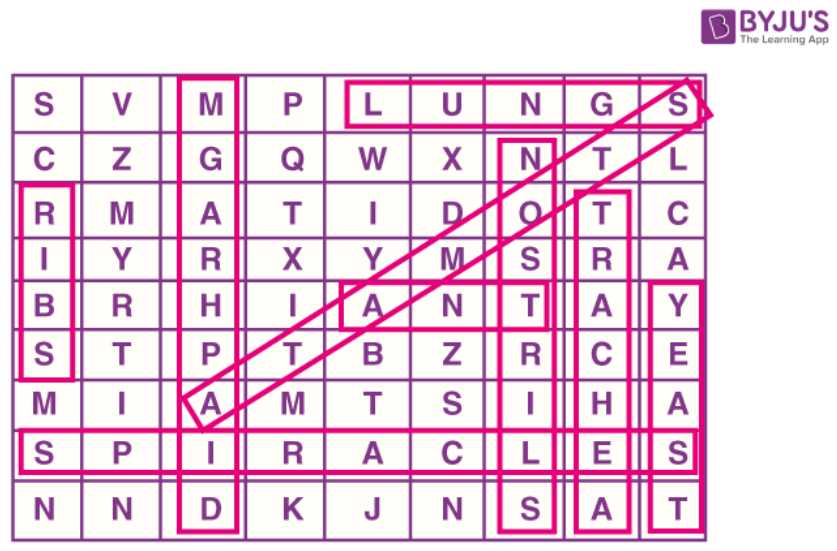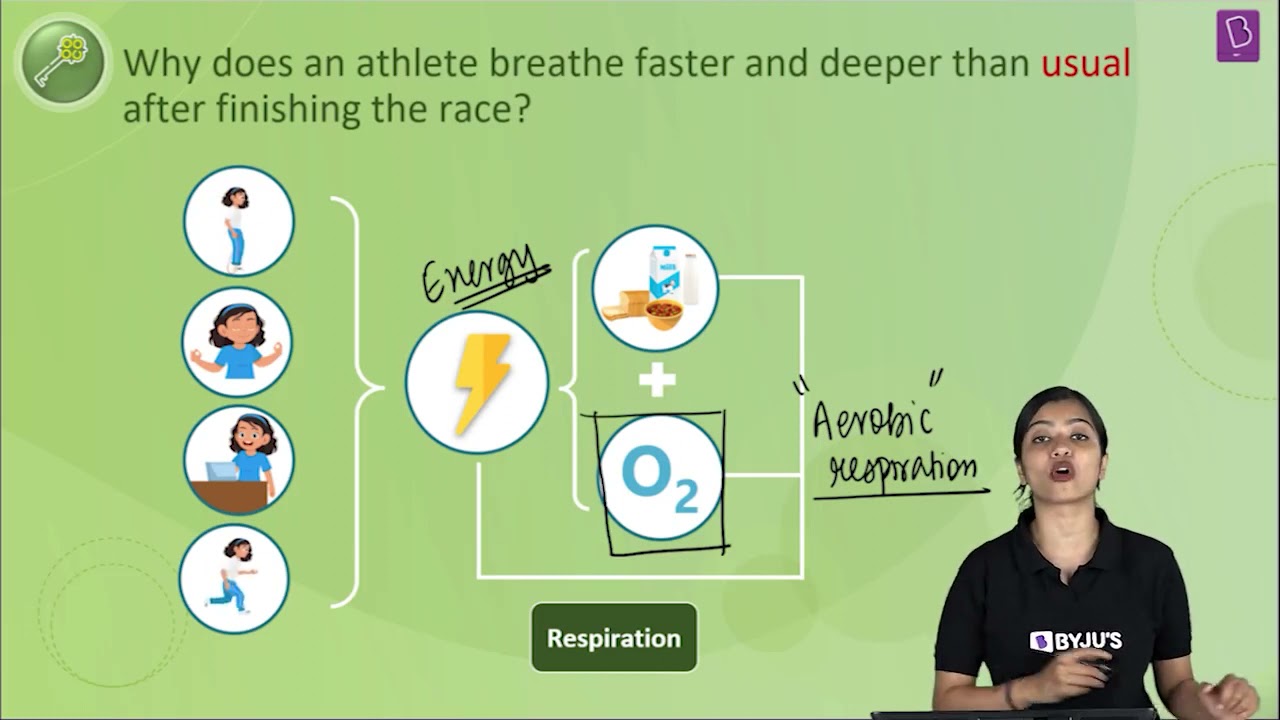NCERT Solutions for Class 7 Science Chapter 10 - Respiration in Organisms
NCERT Solutions for Class 7 Science Chapter 10, "Respiration in Organisms," holds significant importance for 7th-grade students. These solutions have been thoughtfully prepared to present the chapter's content in an engaging and educational manner. They are expertly crafted to align with the latest CBSE syllabus, making them a valuable resource for students seeking effective exam preparation.
Access Answers to NCERT Solutions for Class 7 Science Chapter 10 - Respiration in Organisms
Students can access the NCERT Solutions for Class 7 Science Chapter 10 - Respiration in Organisms. Curated by experts according to the CBSE syllabus for 2023–2024, these step-by-step solutions make Science much easier to understand and learn for the students. These solutions can be used in practice by students to attain skills in solving problems, reinforce important learning objectives, and be well-prepared for tests.
Respiration in Organisms
Why do we often sneeze when we inhale a lot of dust-laden air?
When we inhale dust-laden air, the dust irritates the nose; as a reflexive action, dust is thrown out through sneezing.
Take three test tubes. Fill ¾th of each with water. Label them A, B and C. Keep a snail in test tube A, a water plant in test tube B and in C, keep both the snail and plant. Which test tube would have the highest concentration of CO2?
Test tube A will have the highest concentration of CO2 because test tube A has a snail which expels out CO2 into the tube. Since a plant is present in both test tubes B and C, the plant will inhale CO2 to decrease CO2 concentration. Thus, there will be less concentration of CO2 in these tubes.
Tick the correct answer:
(a) In cockroaches, air enters the body through
(i) lungs (ii) gills (iii) spiracles (iv) skin
(b) During heavy exercise, we get cramps in the legs due to the accumulation of
(i) carbon dioxide (ii) lactic acid (iii) alcohol (iv) water
(c) Normal range of breathing rate per minute in an average adult person at rest is
(i) 9–12 (ii) 15–18 (iii) 21–24 (iv) 30–33
(d) During exhalation, the ribs
(i) move outwards (ii) move downwards (iii) move upwards (iv) do not move at all
a) (iii) spiracles
b) (ii) lactic acid
c) (ii) 15–18
d) (ii) move downwards
Match the items in Column I with those in Column II:
|
Column I |
Column II |
|
(a) Yeast |
(i) Earthworm |
|
(b) Diaphragm |
(ii) Gills |
|
(c) Skin |
(iii) Alcohol |
|
(d) Leaves |
(iv) Chest cavity |
|
(e) Fish |
(v) Stomata |
|
(f) Frog |
(vi) Lungs and skin |
|
(vii) Trachea |
|
Column I |
Column II |
|
(a) Yeast |
(iii) Alcohol |
|
(b) Diaphragm |
(iv) Chest cavity |
|
(c) Skin |
(i) Earthworm |
|
(d) Leaves |
(v) Stomata |
|
(e) Fish |
(ii) Gills |
|
(f) Frog |
(vi) Lungs and skin |
Mark ‘T’ if the statement is true and ‘F’ if it is false:
(i) During heavy exercise, the breathing rate of a person slows down. (T/F)
(ii) Plants carry out photosynthesis only during the day and respiration only at night. (T/F)
(iii) Frogs breathe through their skins as well as their lungs. (T/F)
(iv) Fishes have lungs for respiration. (T/F)
(v) The size of the chest cavity increases during inhalation. (T/F)
i) False
ii) False
iii) True
iv) False
v) True
The mountaineers carry oxygen with them because:
(a) At an altitude of more than 5 km, there is no air.
(b) The amount of air available to a person is less than that available on the ground.
(c) The temperature of air is higher than that on the ground.
(d) The pressure of air is higher than that on the ground.
(b). The amount of air available to a person is less than that available on the ground.
Given below is a square of letters in which are hidden different words related to respiration in organisms. These words may be present in any direction — upwards, downwards, or along the diagonals. Find the words for your respiratory system. Clues about those words are given below the square.
(i) The air tubes of insects
(ii) Skeletal structures surrounding the chest cavity
(iii) Muscular floor of the chest cavity
(iv) Tiny pores on the surface of a leaf
(v) Small openings on the sides of the body of an insect
(vi) The respiratory organs of human beings
(vii) The openings through which we inhale
(viii) An anaerobic organism
(ix) An organism with a tracheal system
(i) Trachea
(ii) Ribs
(iii) Diaphragm
(iv) Stomata
(v) Spiracles
(vi) Lungs
(vii) Nostrils
(viii) Yeast
(ix) Ant

Why does an athlete breathe faster and deeper than usual after finishing the race?
Athletes need a lot of energy during the race, and for the release of energy, they need a lot of oxygen; hence they breathe faster than usual after finishing the race.

List the similarities and differences between aerobic and anaerobic respiration.
Similarities:
-
In both kinds of respiration, food particles are broken down to release energy
-
Both occur inside the cells
-
Both supply by-products
Differences
|
Aerobic respiration |
Anaerobic respiration |
|
Takes place in the presence of oxygen |
Takes place in the absence of oxygen |
|
End products are CO2 and H2O |
End products are CO2 and alcohol |
|
Produces a large amount of energy |
The energy released is less when compared to aerobic respiration |
|
It occurs in most plants and animals |
Occurs in yeast and some bacteria |

Frequently Asked Questions
The NCERT solution for Class 7 Chapter 10: Respiration in Organisms is important as it provides a structured approach to learning, ensuring that students develop a strong understanding of foundational concepts early in their academic journey. By mastering these basics, students can build confidence and readiness for tackling more difficult concepts in their further education.
Yes, the NCERT solution for Class 7 Chapter 10: Respiration in Organisms is quite useful for students in preparing for their exams. The solutions are simple, clear, and concise allowing students to understand them better. They can solve the practice questions and exercises that allow them to get exam-ready in no time.
You can get all the NCERT solutions for Class 7 Science Chapter 10 from the official website of the Orchids International School. These solutions are tailored by subject matter experts and are very easy to understand.
Yes, students must practice all the questions provided in the NCERT solution for Class 7 Science Chapter 10: Respiration in Organisms as it will help them gain a comprehensive understanding of the concept, identify their weak areas, and strengthen their preparation.
Students can utilize the NCERT solution for Class 7 Science Chapter 10 effectively by practicing the solutions regularly. Solve the exercises and practice questions given in the solution.

